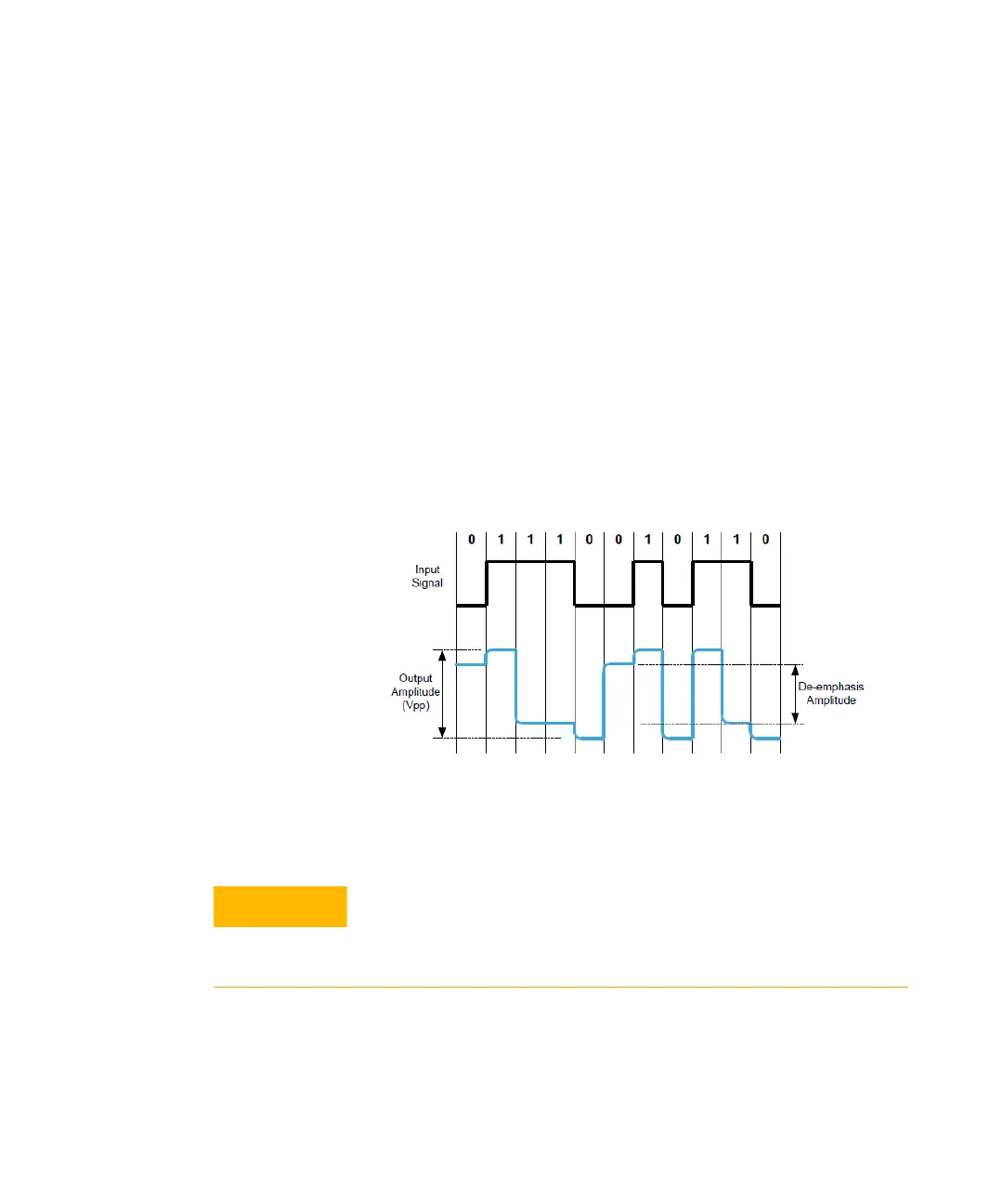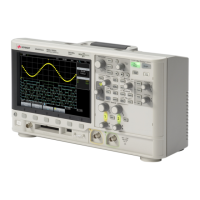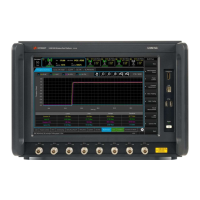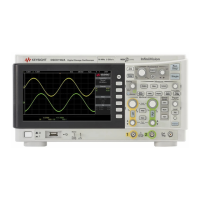Keysight M8000 Series of BER Test Solutions User Guide 267
Setting up Generator 5
• The other one has an adjustable delay (automatically set to one signal
clock period) and a programmable inverting attenuator/amplifier to
produce the delayed signal with a lower voltage swing.
Finally, the signals of both branches are added. This means, the delayed
signal voltage is subtracted from the specified peak-to-peak amplitude.
Pre-cursor de-emphasis
It is also possible to convert the input signal to a pre-cursor deemphasized
signal.
This can be done by setting the output voltage swing to the desired
deemphasis amplitude and specifying a negative amplitude ratio (an
amplification). This inverts the roles of the two branches. The delayed
signal has now a larger amplitude than the direct signal. A waveform
example is illustrated in the following figure.
When pre-cursor de-emphasis is generated this way, the complementary
Output of the De-Emphasis Signal Converter becomes the normal output
and vice versa.
Be very careful if you set the de-emphasis ratio to amplification! In this
case, there is no indication of the peak-to-peak voltage applied to the
DUT. You need to calculate or measure the output signal voltage
precisely. Otherwise you might damage your device.

